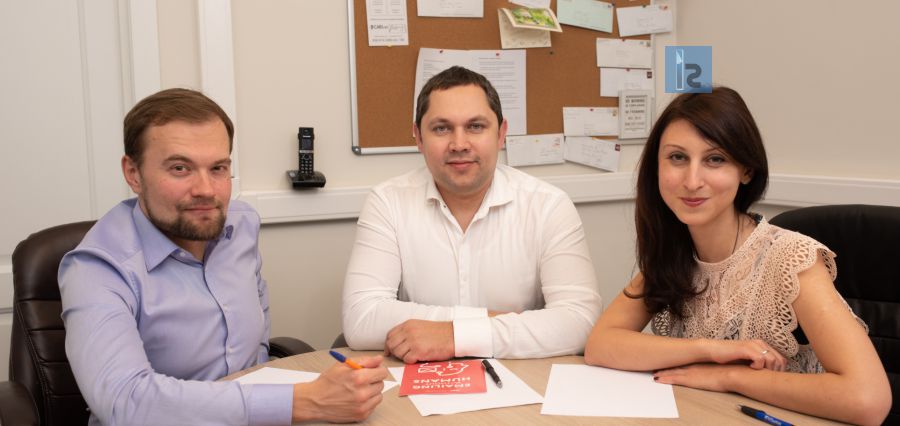Before founding the organization, all the three leaders of iAge had worked in digital space for almost 15 years to create digital products that solve customers’ problems, and bring value to them. However, at one point, they had to admit: no matter how qualified the marketers of the team were, they were trying to bite more than they could chew.
With projects so numerous, how would anyone ever manage to find enough human resources for each? How could one quickly and effectively solve issues and answer pressing questions like “What should we send our email subscribers? At what time? With what frequency?” Moreover, they had collected a significant volume of subscriber data that humans could scarcely fathom.
Through trial and error, they realized that granular segmentation enables them to provide each subscriber with an offer so well-timed and appropriate that they are doubtful to refuse it. Relevant in every respect, such offers resonate with users and unfailingly stimulate an active response, which improves the overall campaign performance. They also realized that such a level of granularity could only be achieved by applying AI technologies to the email marketing efforts. AI does not need humans to decide which content suits each individual user best and how often it should be sent. It can do more than build email campaigns for each of the numerous audience segments – AI can develop and carry out personalized communications with individual subscribers, each with its own frequency and content. Eventually, this concept served as the decision to establish the company iAge Technologies, Inc in 2011.
Solving Client’s Needs
The needs of iAge’s clients are completely based on the necessity to increase the revenue through the usage of all content they have in the most effective way. In order to solve client’s needs, the organization has implemented the core product- XR, which is an AI- powered solution for email marketing.
According to iAge Technologies, AI strategies help define the content that has maximum click probability for a certain user and to use it for increasing engagement. By analyzing all uploaded content and the customers’ characteristics, ML algorithms can accurately define the content that should be used and create a personal communications calendar to get the best response from each customer. ML algorithms help to;
- Select best content based on CTR analytics
- Ensures high double opt-in rates and helps to build a loyal audience
- Customize send times based on behavior patterns
- Optimize promotional campaigns to ensure high CPM rates
- Enable event-triggered email series based on user activity
Also, iAge Technologies provide fully-automated solutions for email marketing. It means that all parts- content creation, setting technical resources, content, delivery level, performance optimization are made on the side of XR algorithms. No more managers needed to do email marketing. Just set up posting and receive users’ returns.
The Forerunners
Artem Kukharenko (CEO), Denis Uspenskiy (CTO) and Tatyana Murzova (Vice- President) of iAge Technologies chose digital technologies as their career path. Together with the team of iAge Technologies, Inc, they have integrated the philosophy of customer relationship and the expertise accumulated in the course of decade-long project work to create a technology solution that relies on AI strategies to organize customer communications in the 1:1 way.
As the CEO of iAge Technologies Inc., Artem oversees the company’s growth and optimizes all divisions of operation. His bold ideas and proactive approach are the key boosters of the organization’s success.
In his role as the CTO, Denis’s key tasks include ensuring that all the systems are up and running smooth at all the times. And all the technologies developed at the organization are always at least a step ahead of the competition.
Lastly Tatyana’s chief role as the Vice President is to provide the much needed backbone for ever-growing performance and quality of all digital products of the company. She is a reasonable perfectionist, a strong leader and the driver of innovation and improvement.
Helping Machine Learning Industry Evolve
As an organization, iAge Technology is working round the clock in order to implement AI for different verticals, including; financial services, banking, content marketing, ecommerce, automotive, dating, etc. to increase the results from email marketing. According to the company, it can be achieved by the creation of numerous hypotheses to train AI algorithms by educating the team of analytical specialists to;
- Determining the priorities
- Transforming the priority question, once it is determined it uses different AI algorithms, including Random Forrest, SVM, etc.
- Applying the function to find a solution that is the best match for the key metrics linked with the goal.Using the solution to create a personal communication strategy for each customer.
Making Solutions Resourceful
In order to estimate the probability of the best opening time, as well as to determine the likelihood of action for each profile, XR uses the RandomForest statistical model. Data for that is prepared in a unique way, and various behavioral aggregates are collected and analyzed according to the raw log of profile actions. The received totals are then processed, cleaned, and noise sign gets removed. XR uses L1 Regularization to find the best features.
What’s in Store?
iAge Technologies’ future aspirations are for each industry and territory to have an effective AI strategy for communication with subscribers to achieve the goal, including increasing revenue and decreasing the time for management. That’s why iAge explore user behaviors using machine learning technologies. After all, only ML allows determining each user the most effective sequence of communications. Based on this data, AI algorithms identify users by clusters and determine which communication strategy should be used to achieve the desired result.


